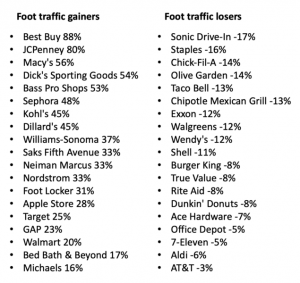Currently, more than 316 billion emails are estimated to be sent out daily. Regardless of the industry you’re in or what type of business you run, email continues to be one of the most cost-effective methods in marketing. It offers good ROI and incredible reach.
Nevertheless, that’s only true if your emails aren’t going directly into someone’s trash bin, getting marked as spam, or blocked. This is why it’s important to always be up to date on industry best practices, which can help you avoid making crucial email mistakes.
The 5 Biggest Email Marketing Mistakes
There’s a finite opportunity for building an email relationship with your target audience, and it’s very competitive. Hence, it’s essential to get email marketing right. All it takes is for your customer to make one simple click and “unsubscribe” from your mailing list for that relationship to be over.
So, how can you guarantee a long-lasting email relationship with your target audience?
Let’s take a look.
1. Lack of Personalization
Email marketing in the current era doesn’t necessarily mean creating more content or sending excessive amounts of emails. It’s all about working smarter and sending a lower quantity of emails to the correct segmented list of subscribers for better results.
- Don’t Send from a “Do Not Reply” Email Address – Sending an email from a No-Reply or DoNotReply email address is unfriendly, unwelcoming, and uninviting. Instead of opting for the latter option, sending your emails from a personalized address and one that your subscribers can reply to is key. Including social media profiles, phone numbers, websites, and other information in the email footer can also add value to the end viewer and creates a more open environment.
- Segment Your List – Another important point to note is segmentation. In the early days of email, one of the biggest mistakes that was made was failing to segment lists. Nowadays, people are tired of generic one-size-fits-all marketing, and consumers are more likely to interact with content that’s targeted and based on their demographics, purchasing habits, and past behaviors. Even though approximately 94% of marketers agree that personalization is an important component of email marketing strategies, only an estimated 5% of companies maximize this opportunity. List segmenting, quite frankly, is something that everyone knows they should be doing, but very few are actually executing this action.
2. Poor Sender Reputation
Email deliverability and sender reputation are key metrics that need to be routinely monitored. You can build these up and optimize your analytics quite quickly, but you can also ruin them in a split second as a result of a bad email campaign.
Email analytics and monitoring can get complicated, but having clear benchmarks that reflect best practices makes it all the easier to decipher the data. For example, a 95% delivery rate is considered good by email providers. Bounce rates shouldn’t be higher than 3%, and the advised “safe-zone” for Spam rates is in and around the 0.8-0.10% mark.
The most effective way to improve your sender reputation, and maintain high metrics is to send high-value and quality emails that your subscribers will open. All the other best practices for email, deliverability, and sender reputation are technical, which help to ensure that your campaigns appear legitimate to computers, email service providers, and spam filters. Nevertheless, your ultimate goal is to appear trustworthy and legitimate to your subscribers, and sending relevant and enriching emails is the easiest way to maintain a high sender reputation.
3. Over-Complicating Emails
When it comes to email marketing, the trick is to keep it simple. Try to stick to one resounding message in the content, which directly ties back to your subject line. If you’re planning on having further offers you can add these lower in the email body, although it’s important to make sure that the header section and introduction are the main focus. Another important thing to note is load speed and adaptability for mobile devices. Bulky emails that aren’t adaptive frustrate the end-user, which in turn have a negative impact on ROI, open rates, engagement, and sales.
Every email should have a clear and concise call to action. There are a variety of calls to actions that work well for email marketing, encouraging subscribers to purchase a product, or asking them to follow a specific social media account are a few examples. Try to refrain from sending emails without an included call to action, as it doesn’t offer value to your audience and can ultimately get written off as spam.
4. Flagged as Spam
When one of your subscribers marks your emails as spam or phishing mail, it’s automatically moved from the recipients inbox into their spam folder. This rule will also apply for all future emails, thus leading your subscriber to no longer engage, open, or read any of your marketing emails.
- Don’t Use Banned Words or Characters – Spending time understanding what keywords, symbols, and email habits default spam filters search for is intrinsic to any successful email marketing efforts. For example, some common words and symbols that are widely used, but are also known to trigger spam filters are “free” and “exclamation mark (!)”, especially when used in the email subject line. The word “free” when used correctly and in context won’t arouse suspicion or leave your email marked as spam. So just remember to make sure you’ve researched what words or characters can trigger these filters and how you can use them effectively while avoiding Bulk or Spam mail issues.
- Get User Consent – Another big mistake people make is failing to get marketing permissions to send someone emails, specifically newsletters. Funnily enough, email is the only form of marketing communication that requires the end-user or customer to consent to receive email messages by law. (Can-Spam act). It’s very simple, there’s only one correct (legal) approach to getting an email address, and that’s asking for it!
- Use a Clear Unsubscribe Button – Sometimes, when people subscribe to your emails, after receiving a few of them, they decide to unsubscribe. This isn’t a problem, as long as they can easily find the button! Enabling your customers to unsubscribe from your marketing communications should be as easy and streamlined as possible. If someone doesn’t want to receive your offers and content any more, hiding the unsubscribe link isn’t going to magically make them want to purchase your product or become your ideal audience. In fact, sooner or later these email practices are more likely to get you blocked or reported for spam.
5. Ignoring Relationships When It Comes to Email
As we mentioned in point one, email is a two-way communication channel, which makes it an ideal tool for relationship building. How can you build trust and authentic relationships with subscribers via email? Below are a few of key points:
- Use an Authentic Voice. It’s important to show your subscribers the real soul and meaning of your business, instead of opting for an overly-polished and formal method of storytelling.
- Don’t Try to Appeal to Everyone. Get specific on who your ideal audience is and talk directly to them and their pain points.
- Use a Welcome Email Sequence: A well thought-out and planned welcome email, or on-boarding sequence can help to set the right foundation for further emails communications by creating the desired expectation in your new subscriber of receiving valuable content when they see your businesses emails in their inbox. For example, opting to send a confirmation and thank you email after people subscribe to your newsletter is more personal than having an instant pop-up “thank you” that appears on your website. This welcome email sequence has several purposes, one of them being to get the user into the habit of opening your emails.
To Sum Things Up
Correcting these five email marketing mistakes doesn’t have to be complicated. Most of these issues can be resolved with simple adjustments and small changes in your overall email marketing practices and strategy.
Email is the perfect opportunity to build a relationship with your customers and audience via the use of storytelling which re-enforces your brand’s core messaging and values. Most of the subscribers on your list will on average receive 40 plus emails daily, the challenge is to make sure your email, both the subject and internal content, stand out from the crowd (or should we say crowded inbox) which most likely won’t happen if it’s impersonal, uninviting, or not segmented correctly.
Here are the main takeaways:
- Correctly build your email relationship with customers and prospects.
- Design and create effective email templates.
- Make sure your emails get delivered by avoiding spam triggers.
- Make sure your emails are adaptive and load quickly.
- Always include a call to action.
Digital & Social Articles on Business 2 Community
(88)





